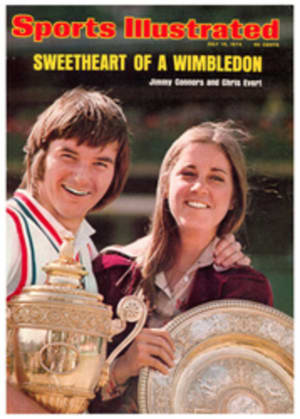
SCORECARD
VOTE OF CONFIDENCE
Among the 63—or is it 257?—non-negotiable demands of the striking National Football League players (page 57) are many so-called freedom issues relating to how the players conduct their own lives. These have been singled out for particular ridicule, but should they be?
Admittedly, the players supporting the strike are flying in the face of one of the most cherished prerogatives in the game: the right of coaches to determine what they will do, and in some cases wear, almost every hour of the day through the entire exhibition and regular season. Such total control, conceivably, is necessary to achieve a winning record in junior and senior high school, perhaps even in college. But in professional sport? We wonder. If a man does not know how to take care of himself properly by the time he turns pro, he soon will be gone, and no loss. There are others to take his place, and his paycheck. The players score some points here.
CORRECTION
Each time a Houston Astro hits a homer in the Dome when the minute hand on the scoreboard clock shows an even number—i.e., 9:12—it's beer on the house for the rest of the game. The giveaways are known as foamers.
Catchy word, that, and worth more exposure, so July 12 was announced by the Astro publicity office as Foamer Night. Then came the retraction: July 12 was already scheduled—as Baptist Night. Hold the foam.
AB-SOLUTELY GOOD NEWS
As dear as a ripe avocado to the heart of a Southern Californian is a bland sea creature growing inside an iridescent shell that attaches itself for dear life to rocks beneath the waters of certain coves along the Pacific Coast. Breaking the suction that holds an ab—as the creature is affectionately known—to its rock requires strong arms and lungs and, traditionally, a tire iron. And rendering the abalone meat edible is equally testing, requiring a merciless pounding with a wooden mallet, but all worth the work according to the ab's devotees.
You can imagine, then, the consternation when the abalone abandoned Abalone Cove on Los Angeles' Palos Verdes Peninsula in the mid-60s, because pollution and warming waters destroyed the kelp beds on which they subsisted. Now the California Division of Fish and Game is attempting to recreate an environment at Abalone Cove. It has transplanted kelp from giant beds off Catalina Island, installed hollow concrete building blocks to protect young abs from such predators as sheephead fish, cleared the area of sea urchins, another adversary, and, finally, seeded the cove with 2,000 juvenile abalone, 1,000 of them a year and a half old and the size of a silver dollar, 1,000 nine months old and no bigger than a thumbnail.
It will be several years before these abs reach the legal seven inches. But if all goes well, Abalone Cove and others like it may once again exist as one veteran diver remembers them: "Wall-to-wall kelp and abalone everywhere."
FALSE PREGNANCY TALES
The detritus of Victorian thinking on the subject of pregnancy and physical activity is with us yet, despite evidence such as Mary Bacon reportedly riding three races at Finger Lakes only hours before giving birth and Mary Ann Beattie of the WTT's Detroit Loves playing tennis up to the last week of her pregnancy. Moreover, according to Marcia Hayes and Thomas Boslooper, co-authors of The Femininity Game, 10 of the 26 Soviet women champions at the Melbourne Olympics were enceinte at the time. Now four doctors have debunked a few more old gynecological tales at a symposium held under the auspices of The Physician and Sportsmedicine Magazine. They report that there is no evidence that female athletes have difficulty conceiving; that many perform better after having borne children; that there are fewer complications in delivery; and that the first stage of labor is shorter.
Assuming there have been no complications, says Dr. Clayton L. Thomas, "If an athlete wants to be ready for a big event six weeks after delivery and she feels she can start training in two weeks, her physician should not object."
His words only confirm what some athlete/mothers had already determined for themselves—golfers Susie Berning and Anne Quast Sander, speed skater Atje Keulen-Deelstra, tennis ace Margaret Court and track and field stars Mary Rand Toomey, Wyomia Tyus and Olga Connolly, just for starters.
DOUBLE ROOK
Had Alan Hall and Gary Moore known two weekends ago what they know today, they probably would have forgone their friendly game of chess, but at the time it seemed a good idea. Fact is, it still does, although a whole lot of this sort of thing might tend to gum up the waterworks.
Generally the gentlemen in question go up to the Lake Superior area in Wisconsin on weekends to play their chess, but they shifted plans and stayed at their Schiller Park apartments in suburban Chicago and essayed an opening gambit—at the bottom of their building's swimming pool. That's right. Both are experienced scuba divers, and how better to spend a summer afternoon than over a cool, nonfloating chessboard 10 feet under?
Management had an idea of how better Claiming Hall and Moore, who refused to surface, were in violation of pool rules, it sent for the police. Patrolman William Buhl arrived prepared to make the historic, underwater pinch. Providently, he had his own scuba gear. Down went Buhl, out came the badge and up bubbled the three, Hall and Moore charged with criminal trespass on property where they lived. They were released on $1,000 bonds and are scheduled to appear in court at the end of the month.
It is not recorded whether Patrolman Buhl apprised the two of their rights at the point of arrest. It is recorded what Hall thinks. "It will be laughed out of court," he said.
A TIME FOR TIMES
Last winter Tony Waldrop began tossing off sub-four-minute miles as casually as Fred Astaire once tripped up and down the staircase and over the dining room table. Along the way the senior from the University of North Carolina ran the fastest mile ever recorded indoors and the cognoscenti, split-catching watches firmly in hand, were impatient for spring, when Waldrop would move to the faster outdoor tracks and, presumably, even faster miles. Then—pfft. Waldrop was not getting under four minutes. He was not even winning races. A puzzlement.
Waldrop complained of being tired, but miler Marty Liquori thought it was more than that. Waldrop, he guessed, was overrun and under-trained. A runner, Liquori told Mai Florence of the Los Angeles Times, can sustain a peak for only about six weeks, and Waldrop was under four minutes on nine consecutive weekends. "It is not possible to do that and train at the same time," according to Liquori. "If you don't put the training in during the winter months there's no way you can be ready in July or August."
So why was Liquori so successful indoors and out during his days at Villanova? Pure fortune indoors, said Liquori, because his coach, Jumbo Elliott, never really let him get in shape during the winter. "He was experienced enough to hold me back, realizing that big things were ahead outdoors. But now it's harder and harder for young guys to hold back during the indoor season because it's so exciting. When you go outdoors, there seems to be less excitement and fewer meets."
When Waldrop does come back, he and the rest of the world's best milers will have a time catching up with Filbert Bayi, the Tanzanian youngster who may break the world record for the distance later this year. He came within three seconds of it last week at Stockholm's International Stadium in a very quick race that was unnoticed in the hurly-burly of Wimbledon and the World Cup. The graceful 21-year-old, not a tactical runner, went off in front and stayed there, winning in 3:54.1 by about the same margin he held at the end of the first lap—seven yards.
While the race was a showcase for Bayi, who is only beginning his season, it pointed up a fact of miling these days: the field is crowded with men pressuring Jim Ryun's 3:51.1 mark. With six of the eight Stockholm entrants running under 3:58, it would have been the Race of the Century only 20 years ago (page 60). It is not inconceivable that 10 years from now Bayi will finish in 3:45—and not end in the first three.
SHOW OFF
A suit filed by the Robert Kruses of Howell Township, N.J. seeks damages to: the days their horse was not gainfully employed. They had sent the mare off to a farm to be trained for the show ring, but she returned home an expectant mother, and that shouldn't have been. Her name is Ain't Misbehaving.
SINKING FEELING
At the very time America's Cup contender Mariner sits forlornly out of water, having her blocky aft streamlined, Britain's Amateur Rowing Association is considering a design that would take the streamline out of the racing shell, giving it the appearance of a long low box. With Mariner it is a case of finding more speed in her hull, and damn the expense. The English want to save money.
The problem with the lovely old shell that painter Thomas Eakins and others found so esthetically satisfying is that it has become too expensive to build—upward of $5,000—and few rowing clubs can afford one.
The ARA turned to 87-year-old Sir Barnes Wallis for a solution. England's foremost inventor during World War II and currently working on plans for an aircraft that will fly at 5,000 mph, he responded with the square-faced ugly duckling that assuredly will depress the old boys gathered at Henley this past week who already have seen too much change for the drearier in their lifetimes. Marginally slower through the water than the conventional U-shaped boat—frictional resistance, or drag, is increased 37%—Wallis' version would save so much weight, the inventor says, that it would be faster. This seemed doubly certain when a fellow scientist modified the Wallis concept to reduce drag to a mere 1½% increase—at a saving of 27 pounds. The shell uses materials that are plentiful and cheap and it can be mass-produced.
Nobody has tested a model yet. When they do we hope the thing sinks. It may be a lost cause, but we're with the old boys.
SINKING FEELING II
Dr. Jack H. Wilmore of the University of California at Davis offers the following for our summertime mulling: in the 1924 Olympics the winning time for the men's 400-meter freestyle was 16% faster than that of the women's 400. By 1948 the difference was down to 11.6%, by 1972 7.3%. Should women continue to close the gap at the same rate, they will be outswimming men at 400 meters by 2012.
ILLUSTRATION
THEY SAID IT
•Teddy Martinez, New York Met shortstop, after making five errors in five games: "I can't play perfect every day."
•Lee Trevino, after struggling to a 74 in the first round of the Western Open: "One good thing. My wife tells me she doesn't care what I do when I am away, as long as I'm not enjoying it."
•Gaylord Perry, Cleveland Indian pitcher, asked whether he had thrown any illegal pitches this season: "Not in a game, but I did throw a few in the bullpen. I don't want to be caught short if they legalize the spitter."
•Jimmy Connors, winner at Wimbledon, asked earlier how he felt after going five sets before beating Australian Phil Dent: "Overseeded."
•Ralph Houk, Detroit Tiger manager, considered without peer at kicking dirt on umpires, giving his opinion on the dirt-kicking performance of Baltimore Oriole Manager Earl Weaver: "Earl has to learn a better follow-through. He's got to get the dirt higher."

